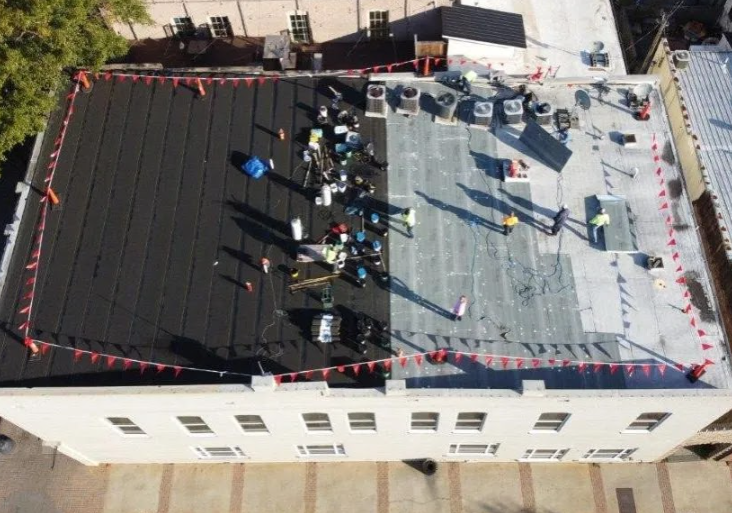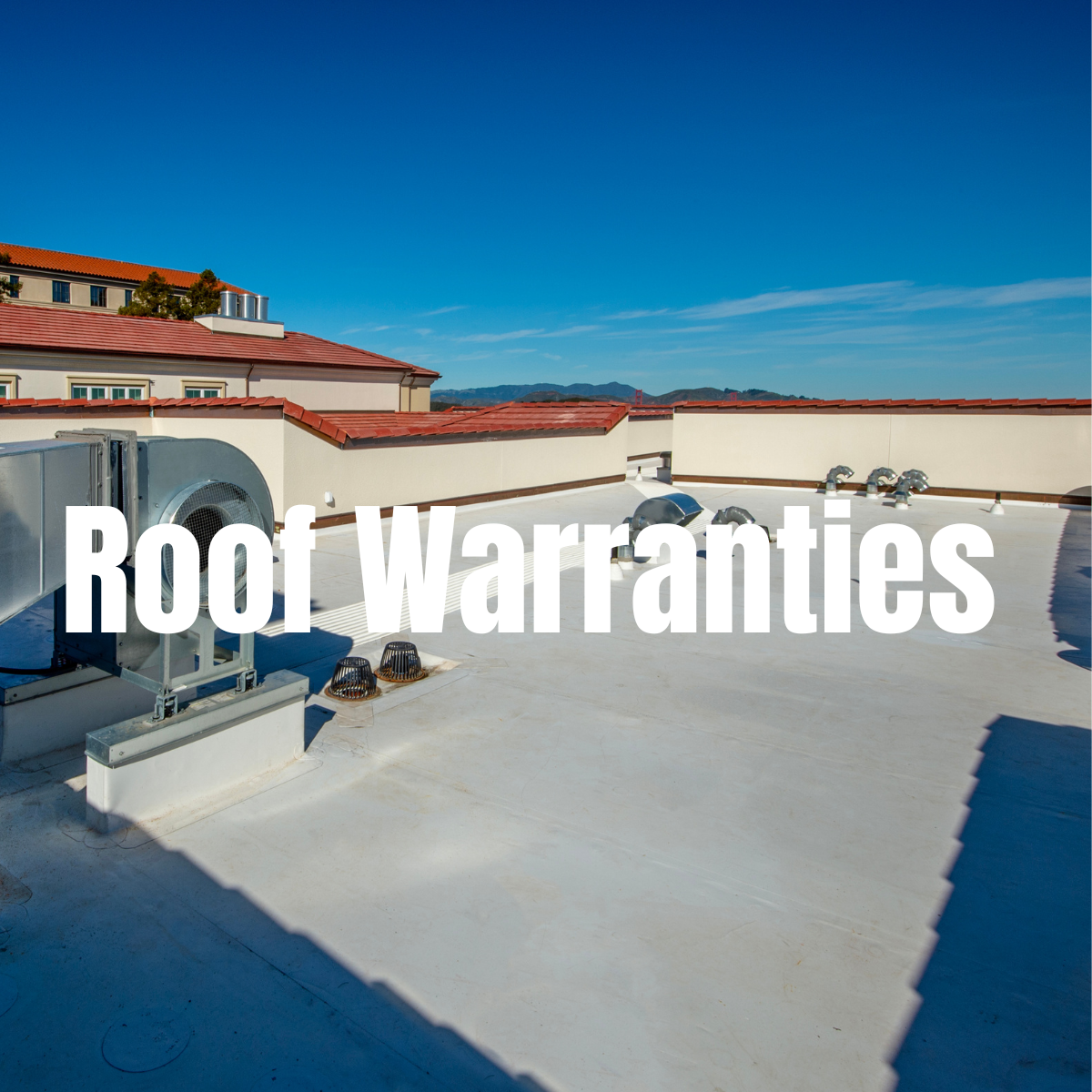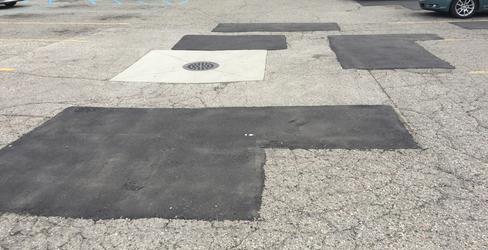Back in December’s blog post I gave the run down on the different types of single ply roofing systems (here it is if you missed it!) Sticking with the roof theme this month as I go into what a roof coating is, the types of roof coatings and when they are typically used.
Roof coatings are designed for protecting and extending the useful service life of existing roof systems; such as built-up roofing (BUR), metal, modified bitumen, single ply membranes, and spray polyurethane foam. Roof coatings act as a supplementary layer on top of these roof systems. Providing additional protection against things like, UV radiation, weathering, and water infiltration. There are various kinds of coatings to choose from, each offering unique properties and benefits. Some common types on the market are, Acrylic, Silicone and Polyurethane. Here is a breakdown of what you need to know about each one.
Acrylic roof coatings are water-based and known for their flexibility, durability, and resistance to UV radiation. They are often used for their reflective properties and energy efficiency in hot sunny climates. However they do not hold up well with ponding water and only recommended on roofs with positive drainage. Because acrylic is a water-based substance, temperatures at or below 50°F can negatively affect adhesion to the roof substrate and impede cure time.
Silicone roof coatings provide excellent UV protection and are resistant to ponding water. They erode much slower than other coatings without becoming brittle or hard. However, it does attract dirt rather easily and will gradually lose reflectivity if not cleaned periodically. They are also extremely slippery when moisture is present.
Polyurethane roof coatings are known for their impact resistance and flexibility compared to other coatings, they are more impact-resistant and are better suited to handle pedestrian traffic. They are also strong enough to endure the natural expansion and contraction (thermal movement) of roof structures.
These roof coating materials can be formulated in different ways with additives like reinforcing fibers to enhance their durability or to meet specific performance requirements, such as UV resistance, weatherproofing, and energy efficiency. A coating is only as good as the surface it is applied on and any repairs are required prior to the application of the coating, as the waterproofing is still primarily completed by the existing membrane. If proper roof preparation is not done before a coating is installed the manufacturer warranty may not be applicable. Therefore It is important to work with a contractor who is familiar with the chosen roof coating and the manufacturer’s specifications and warranty guidelines.
Determining whether a roof coating or a full roof replacement is the best solution for your needs can be challenging. To help you navigate this decision, consider the following questions:
- Does your roof already have two roofing systems in place? Many building codes restrict the installation of more than two roofing systems on a single roof. Opting for a roof coating, which does not count as a roofing system, can offer a cost-effective and sustainable way to extend your roof’s lifespan without a complete replacement.
- Is your roof exhibiting signs of wear and tear while remaining structurally sound? If your roof shows minor leaks, surface degradation, or UV damage, a roof coating can provide additional protection against the elements while preserving your existing roofing system.
Roof coatings have a proven track record of extending the service life of existing roofs, enhancing a building’s energy efficiency, and mitigating damage from chemicals and UV light. With manufacturers warranties typically ranging from 5 to 20 years, reflecting the longevity and reliability of their products. If you need help determining what the best option for your roof, whether that’s a full replacement or a roof coating please reach out.




